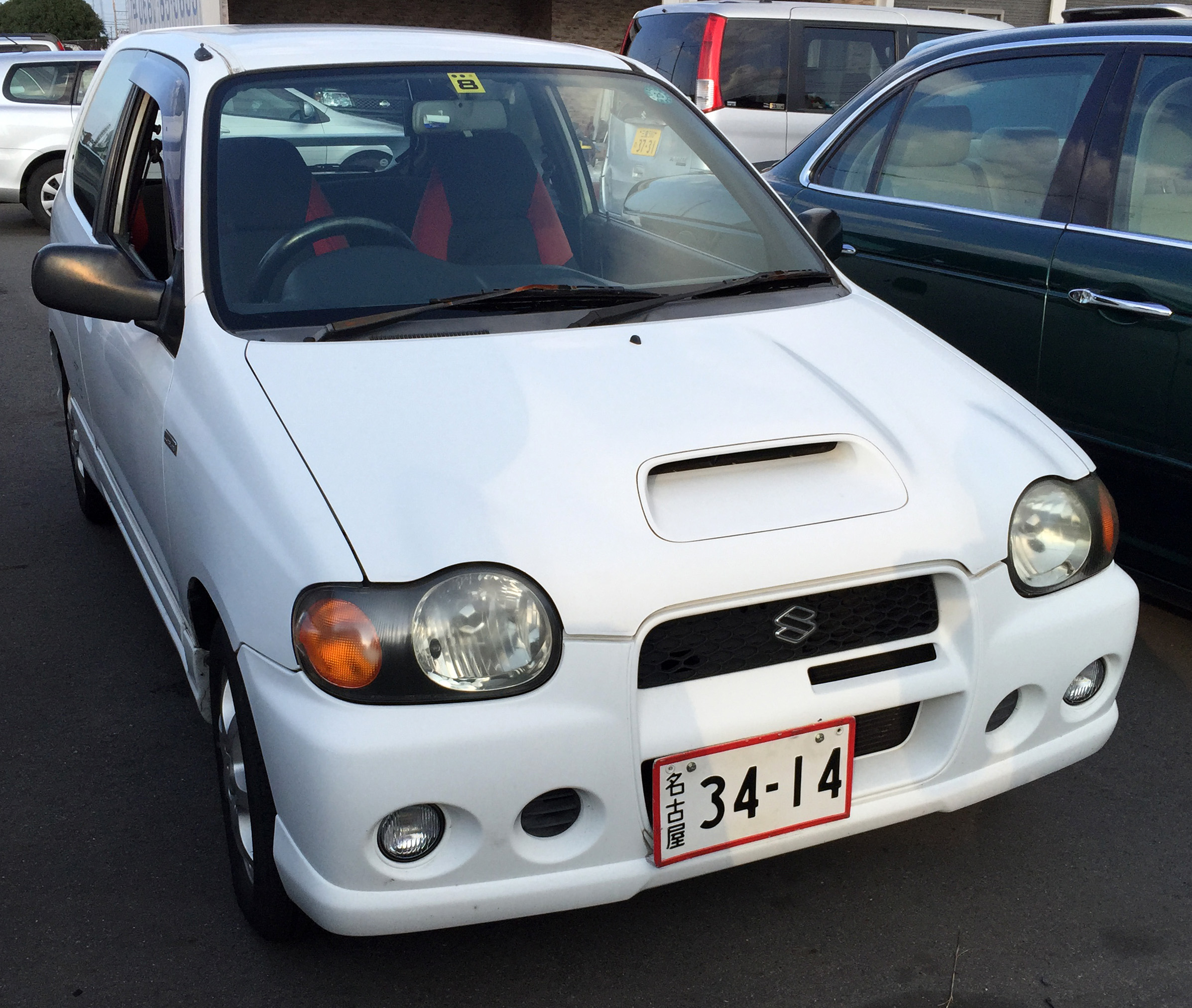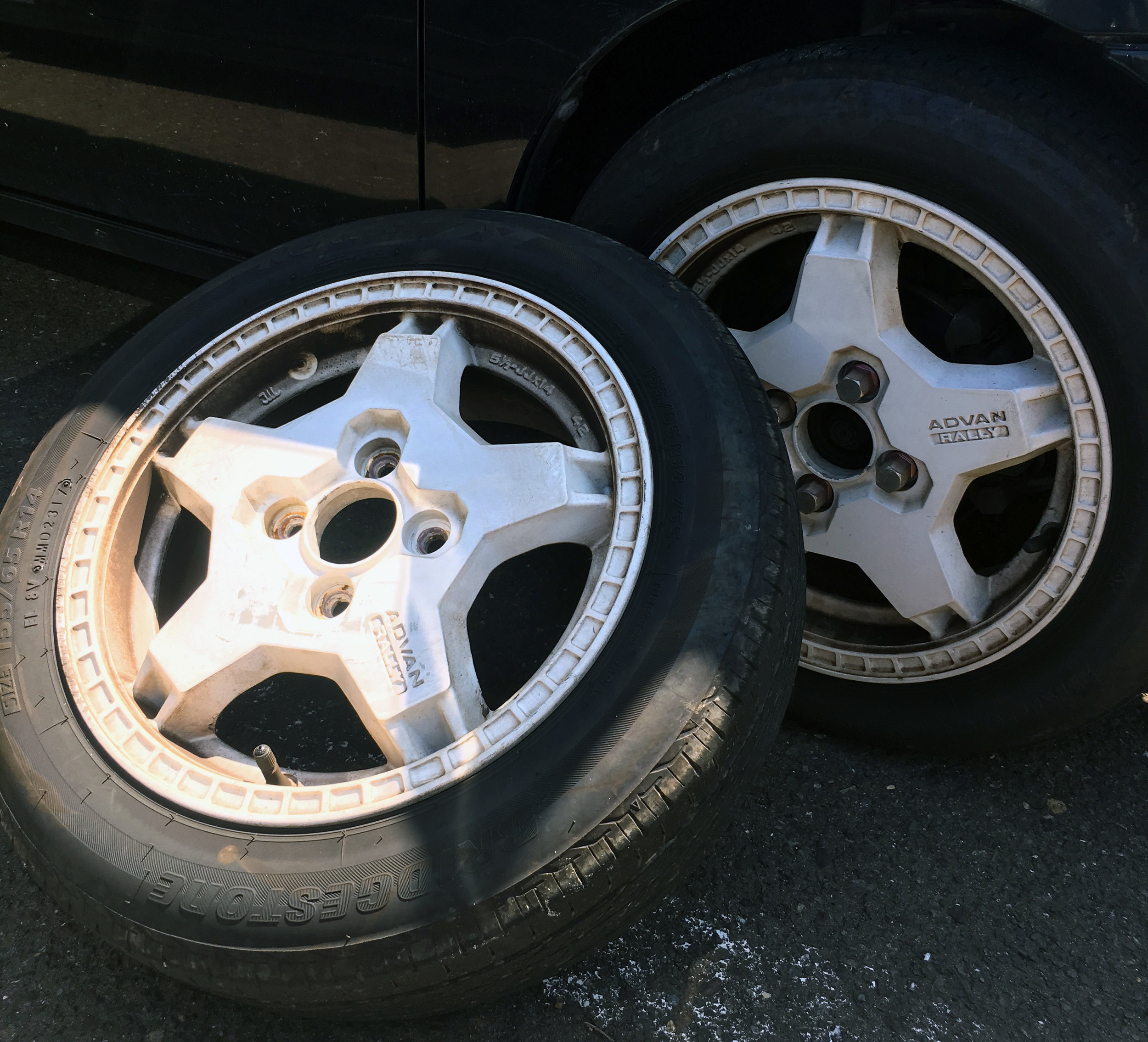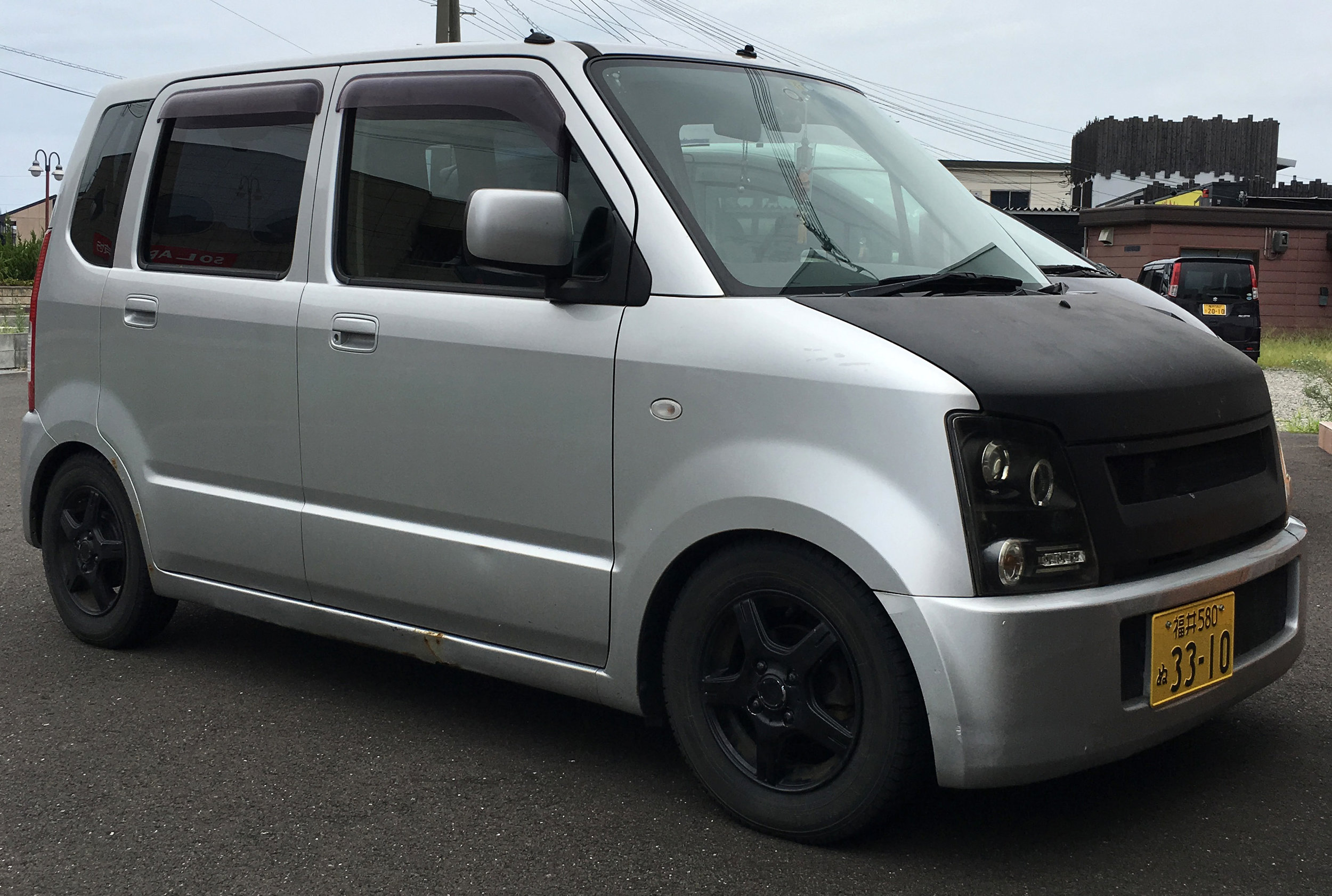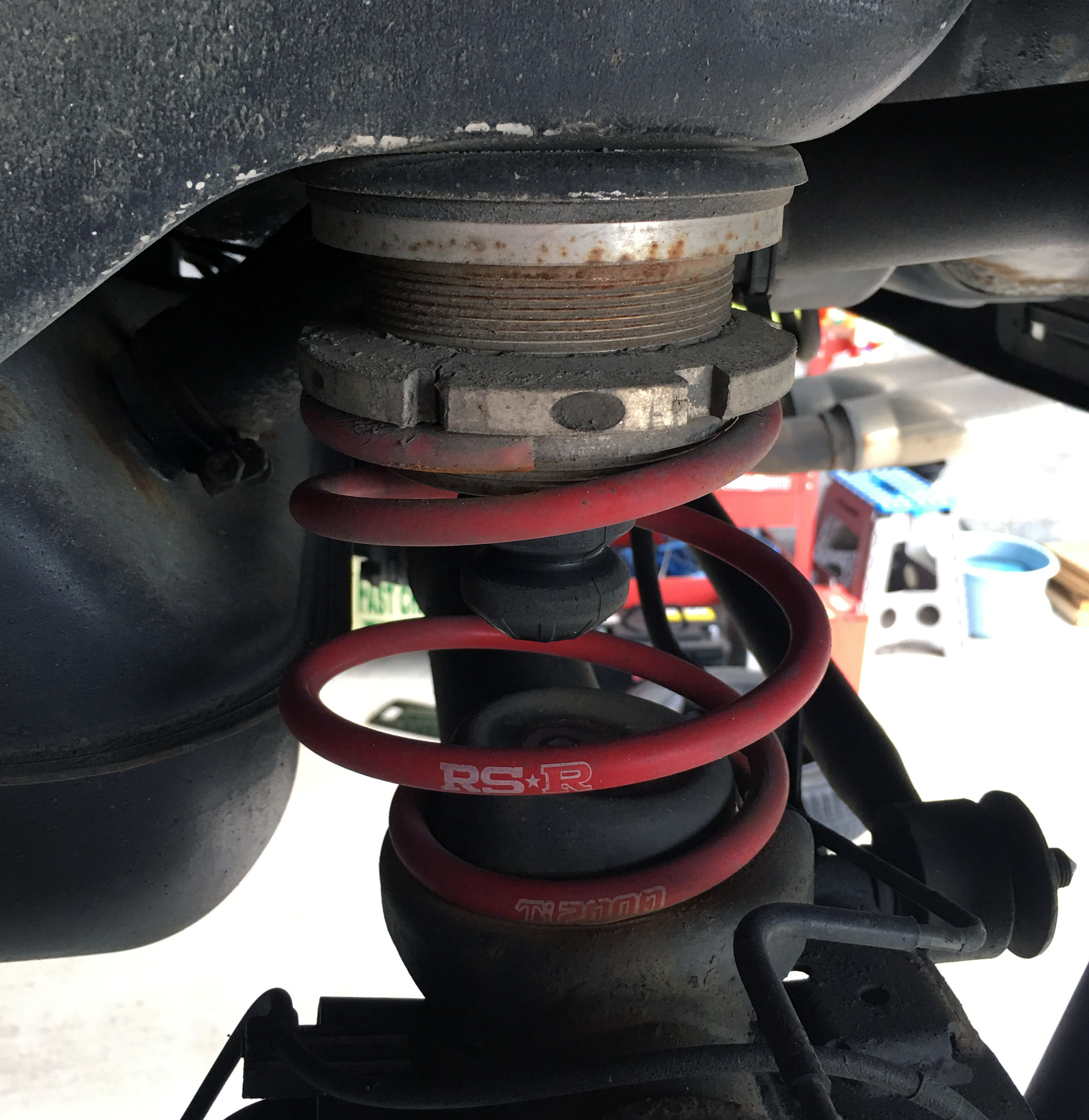[ Alto Works HA12S ] My First Car in Japan
Now that a few of the major initial modifications are finished on my HA11S Alto Works, I’d like to throwback to my 1998 HA12S Alto Works I bought 4 years ago, new to me in November 2014.
I wasn’t initially looking to buy a car, as I only planned to stay in Japan for only one year. Within a few months of living here, though, I completely changed my mind. (Perhaps I’ll discuss that at a later time.) I wanted to stay here long-term, if not permanently, so buying a motorized form of transportation in my small city would be absolutely necessary. After I decided on picking up a car in Japan, I had to narrow down my choices, but most importantly, it had to fit my budget. The biggest choice I made was that it had to be a JDM car that was not sold in the United States market; I didn’t want a car that I could buy easily stateside.
With all the JDM options out there, I salivated at the vast possibilities: Evos, GT-Rs, STIs, etc. Why not a B22 for that matter? I’m sure that’s probably what you’re thinking, too, if you’ve never bothered to check the prices online. Sure, you CAN buy one of those things, but can you really AFFORD one? (Okay maybe my better-off readers can…) That was my problem. I realized they were far out of my budget.
Keeping in mind additional fees, shaken mandatory maintenance, and insurance, I was only willing to plop down about $5,000 USD out of my pocket.
Narrowing down my options further, I opted to pick up a JDM-market yellow-plate kei car, which was significantly cheaper in taxes, insurance, and maintenance. That still leaves a large tuner market of choices: Autozam (Mazda) AZ-1, Honda Beat, and Suzuki Cappuccino… the ABCs of RWD kei cars. Again, the realization of high used prices kept those cars out of my $5K range, as most good condition vehicles started around $6-7K. There are $5K cars available, but definitely not in the condition I wanted. Let’s be real here; the ABCs are awesome as a second or weekend car, but not really practical as my only daily driver. (At the time, I was only considering ONE car. Oh, how times have changed...)
That still left me with a huge assortment of FWD-based sporty kei cars, such as Daihatsu Miras, Mitsubishi Minicas, and Suzuki Altos. I sorted through Carsensor and Goo-net online and stopped by a number of local car dealers in search of my car. I avoided Yahoo! Auctions, as I felt communicating online with my limited Japanese ability would be difficult. In order of rough importance, my criteria were now:
Under $5K price range
A manual transmission with power preferably close to the maximum limit of 63 HP
Good condition: little to no rust, minimal aftermarket modifications, preferably 150,000 or less kilometers on the odometer
Full 2-year shaken mandatory inspection certification as part of the cost
A practical, sporty body style, which precludes big, tall Wagon R-style boxes
Sure, there were other considerations, but anything else like LSDs, wheels, ABS, etc would be cherry on top. After a few weeks of serious (soul) searching, I came across an HA12S Suzuki Alto Works with about 130,000 kms On the odo. The dealer, Meteor Co., was asking for 230,000¥ and it was located in Aichi Prefecture, a three or so hour train ride away. That following weekend, I took the trip over without contacting the seller.
Arriving at the lot, I could see quite a variety of cars: most were in fair to good condition, some sporty, some pedestrian. I saw the Alto sitting by the front of the lot. Looking around, I built up my courage and asked for help. The dealer (the owner, I discovered later) was willing to open the car for me to visually inspect and run it at idle, but since I seemed a bit of a newbie, he wasn’t really willing to let me drive it. (This is actually quite common, as I later learned.)
Looking around the outside of the car, it looked to be in very good condition. High kilometers notwithstanding, the body was actually really good with no discernible damage to the bodywork that I could find. Of course, given the car was 16 years old at the time, there were a few dings and scratches, but more importantly, it had no rust or noticeable repair work. However, the clear coat was thoroughly gone, actually making the car look a bit matte. The engine bay was a bit dirty, though no different than any other car used for 16 years. No discernible major leaks, the fluids looked fair, and everything was stock.
The biggest issue was inside the cabin: the foul stench of cigarette smoke. I used to be a smoker myself, so I don’t mean “a little smell,” I mean, the full-blown pungent odor of a moist, damp ashtray, overflowing with old cigarette butts. Peeking into the ashtray, though, I found none. Clearly the previous owner must’ve drove around with the windows rolled up, chain smoking one after another to create this lovely lingering aroma.
Speaking of windows, the rear windows were absolutely filthy. A layer of ash and oily smoke buildup covered them. I scratched at it with my fingernail and a curl of grey-brown muck rolled under my nail. The roof of the interior had dark brown plumes, contrasting sharply with the light grey felt. Yup, it probably wasn’t cleaned ever since the car was sold.
The mental image of the previous owner and his burnt, soot-filled lungs, the kind that you see in those “don’t smoke” advertisements, passed through my mind briefly. I shuddered at the thought.
This was why the car was for sale so cheaply. I stopped to consider my other options. The next cheapest Alto Works would jump up to over 300,000¥, so I had to decide if cleaning it out the best I could and dealing with the remaining smell would be worth it. Or waiting for another deal.
An hour later of mulling and poking through it, I decided I would buy it if the guy let me drive or at least ride in it. Seeing my seriousness, he actually let me drive it to get a feel for the clutch, shifter, and steering. Everything felt really good. Despite the appearance, mileage, and stink, the car drove smoothly and it was everything I had hoped for.
At some point, he realized my first language was English. (Maybe he first thought I was from China?) He then proceeded to speak to me in absolutely amazing English, which if I recall was due to him living in Australia for a few years prior. What the heck, man, why did I have to speak to you in broken Japanese this whole time? But the ice was broken and I negotiated down the car 10,000¥ to a very reasonable 220,000¥ ($2000 USD) with two years full shaken. The down payment was made and in two weeks the car would be mine.

































